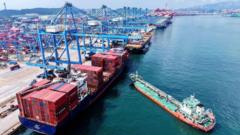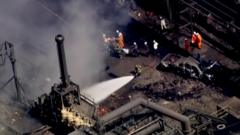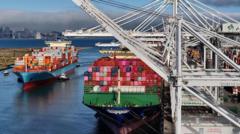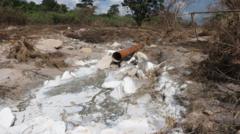As China maintains a near monopoly on rare earths vital for electric vehicles and defense, Australia is investing heavily in its own mining sector to establish a competitive and reliable supply. A $1 billion government loan to Iluka Resources highlights Australia’s commitment to diversifying sources and addressing environmental concerns associated with rare earth processing.
Australia’s Ambitious Strategy to Break China’s Grip on Rare Earths
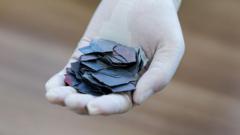
Australia’s Ambitious Strategy to Break China’s Grip on Rare Earths
A billion-dollar loan to a mining firm aims to secure a sustainable supply of rare earths critical for modern technology and green energy.
Drive three hours north of Perth, and you'll arrive in Eneabba, a remote area thick with Western Australia's mining legacy. Beneath its unassuming landscape lies a treasure trove—a million-tonne stockpile of rare earths, critical minerals integral to the production of electric vehicles, wind turbines, and defense equipment. Recognizing the strategic importance of these resources, the Australian government is investing heavily, offering a billion-dollar loan to Iluka Resources to facilitate extraction and processing, aiming to disrupt China’s longstanding dominance in this market.
China’s control over rare earths surfaced as a significant issue during the recent trade wars, particularly when constraints on exports affected manufacturers worldwide, revealing their vulnerability. Ford’s production pause due to rare earth shortages underscored the critical nature of these materials. Despite recent easing of restrictions by Beijing, concerns linger regarding the reliability of supply in the absence of a formal US-China trade deal.
Experts like Jacques Eksteen from Curtin University emphasize that while the term “rare earths” implies scarcity, these minerals are actually not rare; rather, they are essential components in various electric vehicle components and urgently needed across numerous industries. However, the centralization of supply, predominantly in China, poses risks that countries around the world are now keen to mitigate.
Over the past few decades, while other regions, including Europe, have fallen behind, China has solidified its position, commanding more than 50% of global rare earth extraction and processing. Dan McGrath, head of rare earths at Iluka Resources, notes that China's strategy has been to fortify domestic manufacturing and defense through control of the rare earth market.
Iluka, traditionally focused on zircon mining, has found itself in possession of substantial rare earth byproducts, particularly dysprosium and terbium. The Australian government’s investment is a strategic move to create a sustainable supply chain, diverging from reliance on Chinese importation. McGrath asserts that by 2030, Iluka anticipates being able to contribute significantly to Western demand for these essential materials.
However, executing this initiative poses challenges. The process of separating rare earths is complex and resource-intensive, generating significant waste, including hazardous radioactive materials. Recognizing this, the Australian government’s financial backing is crucial to establishing an economically viable refining operation in the region.
Australia's commitment to diversifying sources of rare earths stems from a realization that global dependence on a single supplier is unsustainable. With the pressing need for critical minerals to drive advances in green technology, electric vehicles, and defense systems, resources minister Madeleine King has underscored that the existing market dynamics demand a major shift.
Indeed, as Australia builds its rare earth industry, it must also confront the environmental ramifications of processing these materials. Historically, China's lax environmental standards have led to dire consequences, posing a significant challenge for sustainable mining practices.
Despite these obstacles, experts remain optimistic about Australia’s prospects in the rare earth race. As global demand rises, particularly in light of the shift toward green technology, Australia’s efforts to create a clean and independent supply chain present a promising alternative to the current market landscape dominated by China.

